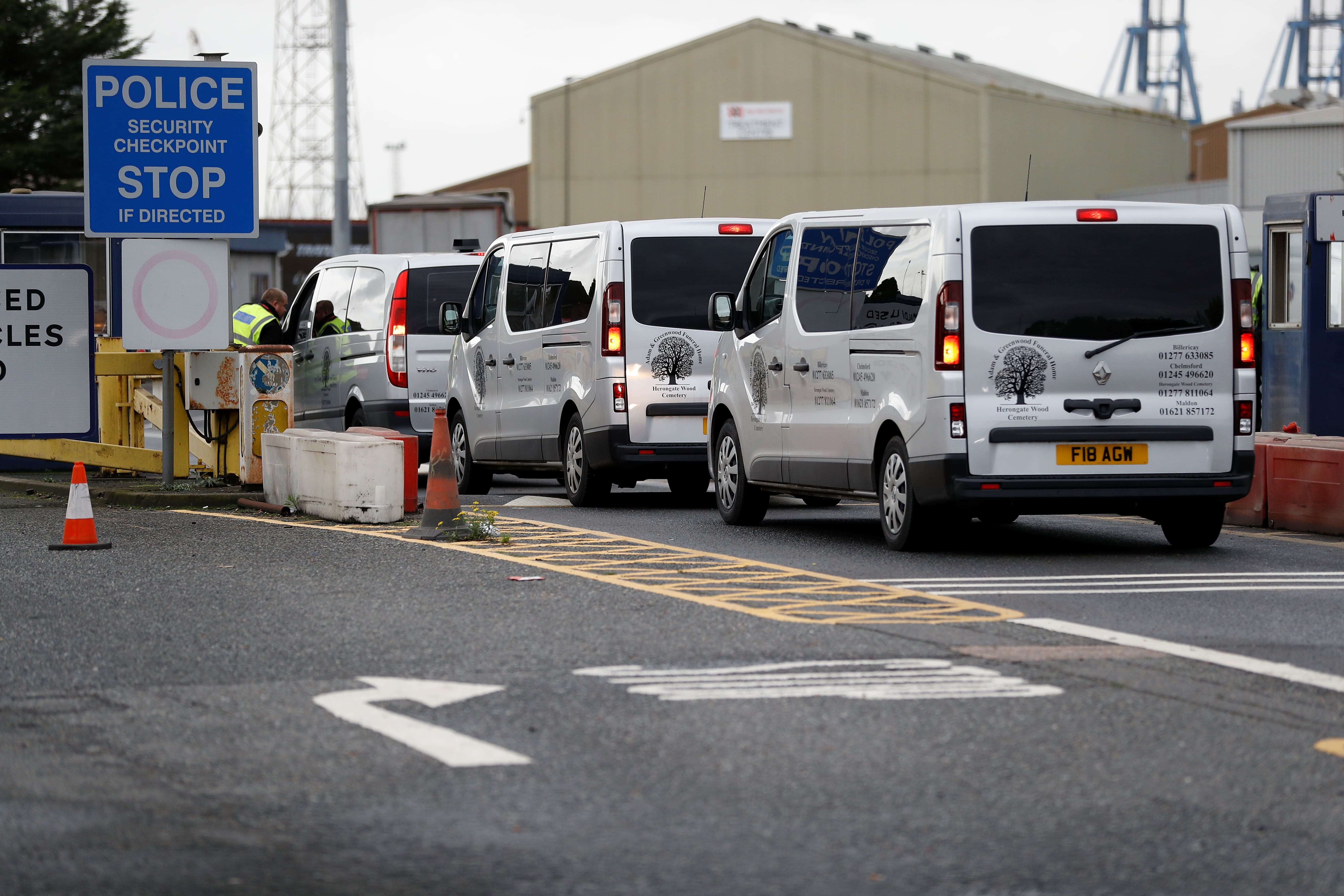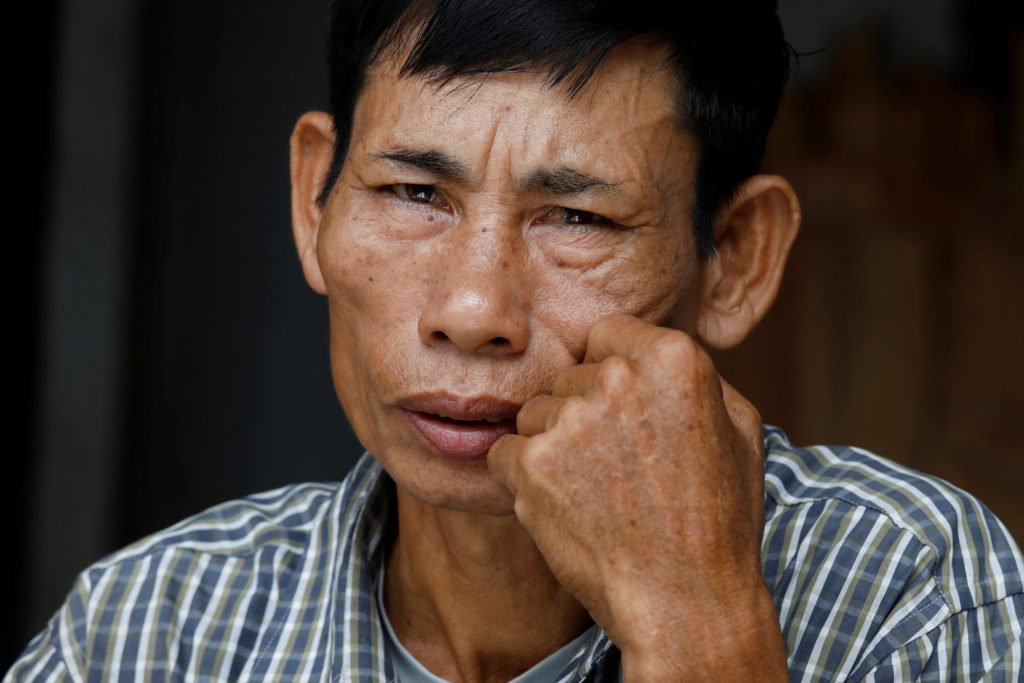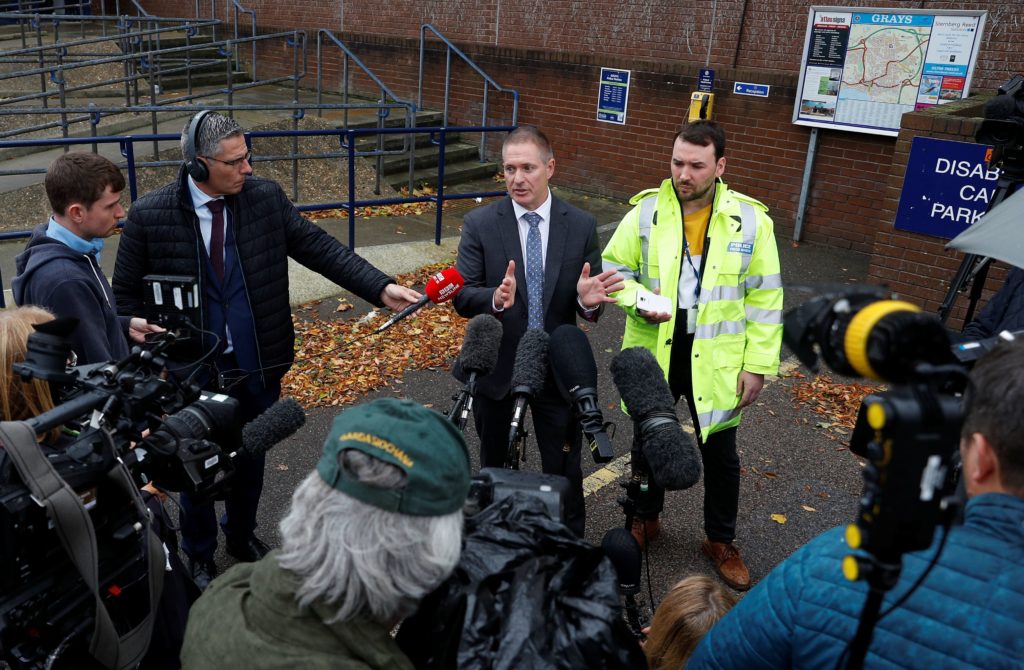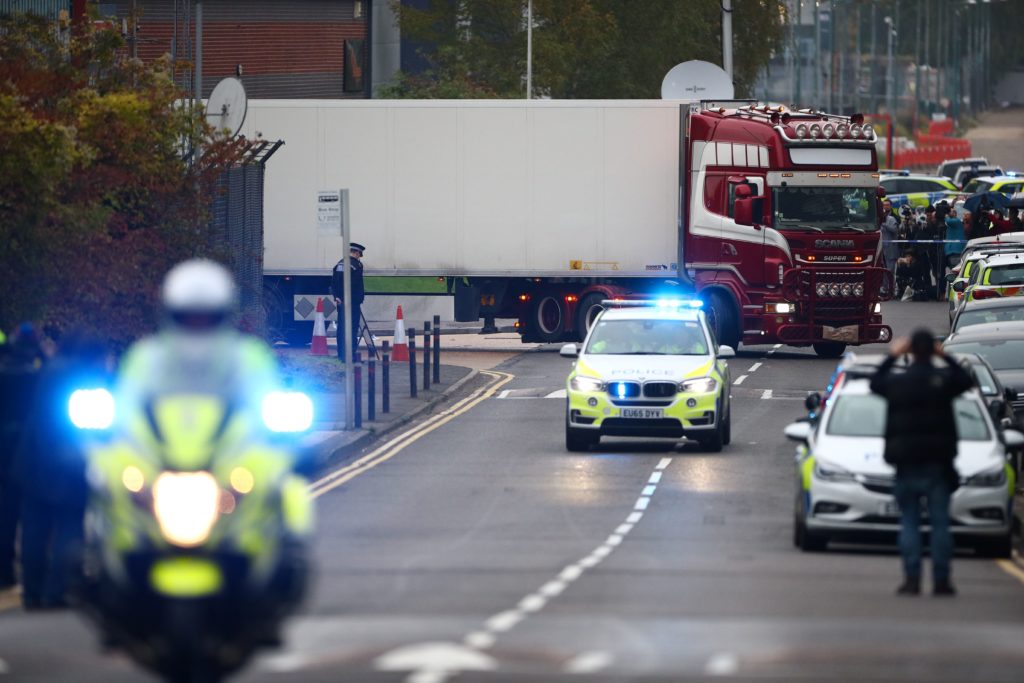Vietnam police take DNA from relatives of suspected truck victims
 Vehicles of a funeral home arrive at the Port of Tilbury where the bodies of immigrants are being held by authorities, following their discovery in a lorry in Essex on Wednesday morning, in Tilbury, Essex, Britain October 25, 2019. (Photo: Reuters)
Vehicles of a funeral home arrive at the Port of Tilbury where the bodies of immigrants are being held by authorities, following their discovery in a lorry in Essex on Wednesday morning, in Tilbury, Essex, Britain October 25, 2019. (Photo: Reuters) CAN LOC, Vietnam – Police in Vietnam have taken hair and blood samples to get DNA from relatives of people feared to be among the 39 who died in the back of a truck near London last week, their family members said.
The bodies were found on Wednesday in a truck container in Grays, about 32 km east of central London and British police are still trying to establish the identity of victims who in many cases lacked identity documents.
In a poor rice-growing area of northern Vietnam, communities have been plunged into mourning with their hope all but lost for relatives who had set out to seek better lives in Europe and were thought to have been aboard the truck.
The hashtag #RIP39 was trending in Vietnam on widely-used Facebook.
Distraught, Nguyen Dinh Gia said he feared there was very little chance he would ever again see his 20-year-old son, Nguyen Dinh Luong, who had been trying to get to Britain after first making it to France.

“Police from the Ministry of Public Security came to get DNA samples, our hair and blood,” Nguyen Dinh Gia told Reuters at Can Loc in Ha Tinh province, where sympathisers gathered at the simple house amid lush rice fields to console the family.
“I advised him not to go because I told him that even though our family had always had nothing and our children were always in hardship, but we brought them up just fine,” Nguyen said.
The father of Pham Thi Tra My, who sent a last text message to her family in the early hours of Wednesday Vietnam time, said police had also been to collect samples of blood and hair.
Vietnam’s government did not respond immediately for a request for comment. Vietnam’s prime minister has called for an investigation into the case.
Police in Britain said on Saturday they had charged one man, 25-year-old Maurice Robinson of Craigavon in Northern Ireland, with 39 counts of manslaughter and other offences including conspiracy to traffic people.

Detective Inspector Martin Pasmore of Essex police speaks to the news media at Grays police station regarding the deaths of thirty-nine immigrants who were found inside a lorry, Essex, Britain October 26, 2019. (Photo: Reuters)
On Sunday, police said three people arrested in connection with the investiation had been released on bail. All three had been questioned on suspicion of manslaughter and conspiracy to traffic people.
Initially, British police believed the victims were Chinese, but later sought help from the Vietnamese community. Chinese and Vietnamese officials were both working closely with British police, the countries’ embassies said.
A Catholic priest in the remote town of Yen Thanh in Nghe An province said on Saturday that he believed most of the dead were likely from Vietnam.
NO DOCUMENTS
British police have said very few of the victims were carrying official identification and that they hope to identify the dead through fingerprints, dental records and DNA, as well as photos from friends and relatives.
In the predominantly Catholic area of northern Vietnam from which the suspected victims came, churches held candle-lit prayers at the weekend.
How the victims came to be in the truck is not yet known.

Police move the lorry container where bodies were discovered, in Grays, Essex, Britain October 23, 2019. (Photo: Reuters)
Some 70% of Vietnamese trafficking cases in the United Kingdom between 2009-2016 were for labour exploitation, including cannabis production and work in nail salons, according to a British government report last year.
The families of the suspected victims were in Nghe An and Ha Tinh, two of the poorest provinces in communist Vietnam.
Nghe An was identified as home to many victims of human trafficking who end up in Europe, according to a March report by the Pacific Links Foundation, a US-based anti-trafficking organisation.
Ha Tinh was ravaged by one of Vietnam’s worst environmental disasters in 2016 when a steel mill owned by Taiwan’s Formosa Plastics contaminated coastal waters, devastating local fishing and tourism industries.
It was from Ha Tinh that Tra My set out, first to China, in the hope of making it to Britain via France. According to Human Rights Space, a civic network based in Vietnam, she sent one final apologetic message home.
“I’m sorry, mum and dad. My path abroad was not a success. I love you both so much. I can’t breathe. I’m from Nghen Town, Can Loc District, Ha Tinh, Vietnam … I am sorry, mum,” the message said.
Reuters


